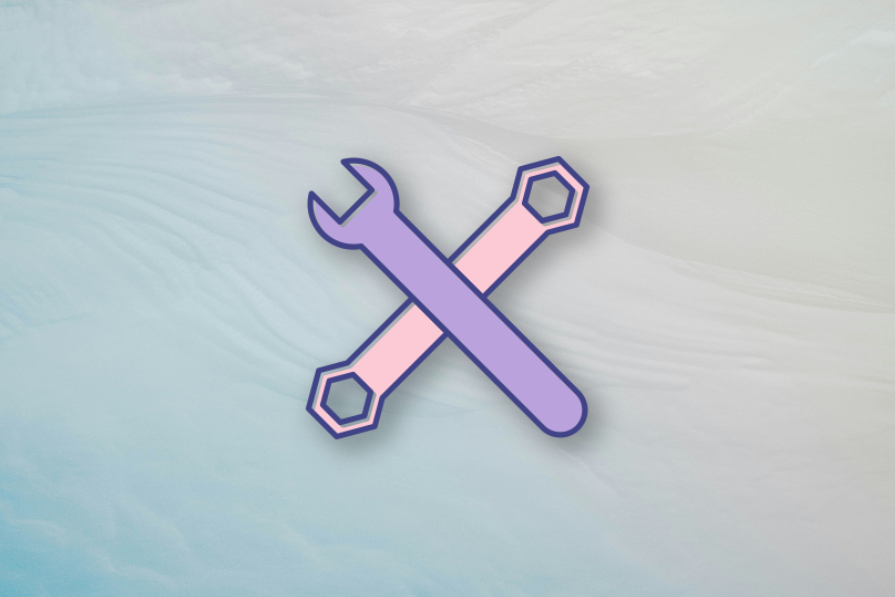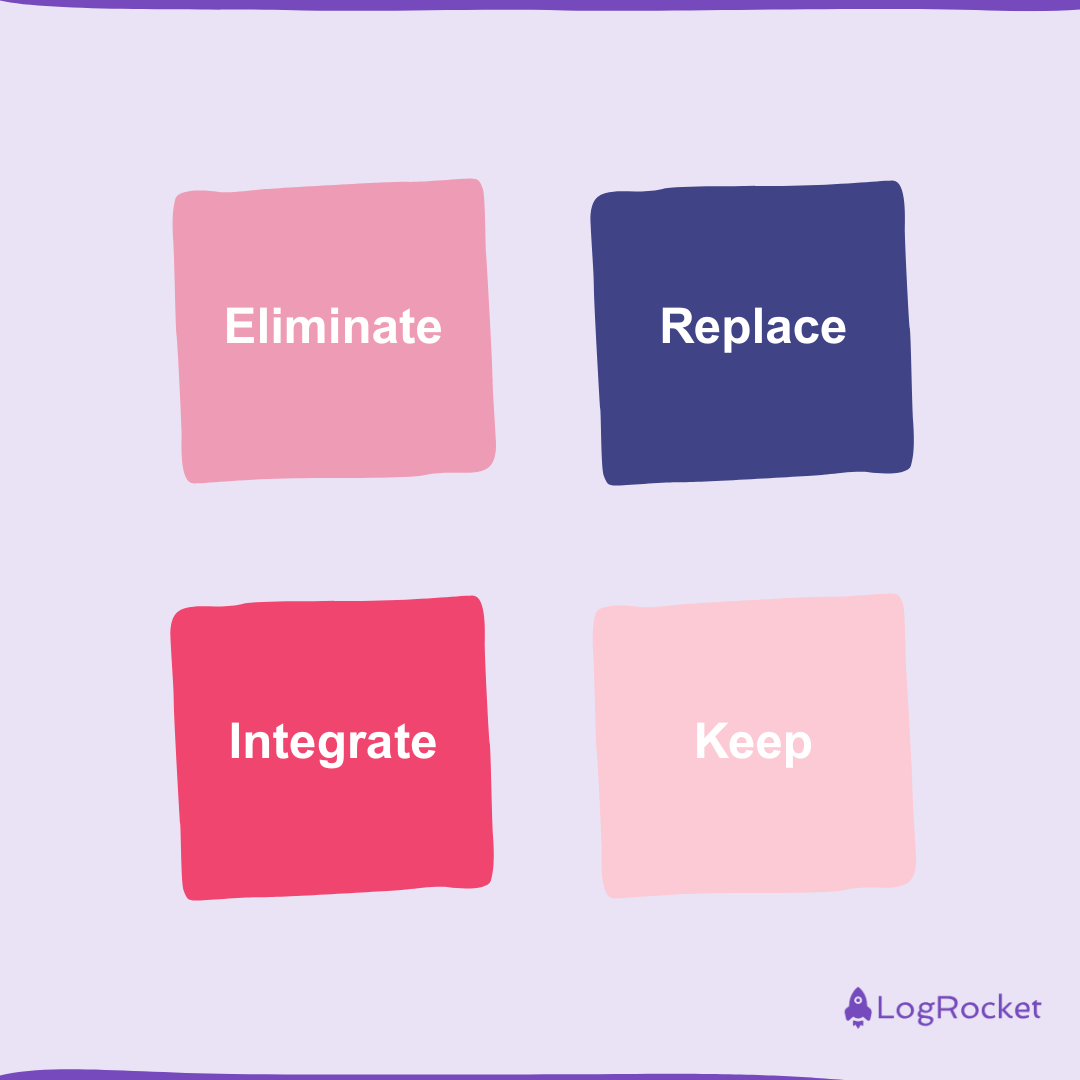How to consolidate your product management tools
Your product stack might feel like you have a million browser tabs open all at once. It’s chaotic, but you swear that you know where everything is on your browser. However, it’s hard to convince others that it’s an effective workflow.
The worst part is that many of these tools work in a silo. It’s easy to lose information, important notes, and consumer data between them. And don’t forget the internal pressure to use fewer tools and cut the budget.
If this sounds familiar, you’re in luck because this article outlines my six step guide to consolidating your product tools. You’ll also learn why tool consolidation is so important and some of the common challenges you might encounter during the process.
1. Assess your current product stack
To get started, list all the tools your product team uses. You’ll want to identify:
- Tool deliverables and outcomes
- Performance and tool usage
- Unused features
A systematic analysis can pinpoint which tools to keep, replace, or remove. It also gives you the chance to find overlapping features and underperforming tools.
You can also gather feedback from your team on their pain points with tools. Leverage their firsthand knowledge to find tools that work best for your team.
Finally, consider analyzing tool usage frequency. A tool used daily may offer more ROI than a tool used sporadically.
2. Define your priorities
Your tools should support essential functions for your team. Tasks like roadmapping, backlog management, and analytics are crucial. But tools should also align with your team’s workflow and company goals.
According to the 2025 State of Product Management Report, these were the most influential factors for tool consolidation:
- Need for standardizing tools across teams
- Budget constraints
- Lack of visibility / data silos
- Leadership / organizational change
- Insufficient business case justification
- Security concerns
Regardless of the reasons, the consolidation plan should support the business strategy. You may need to walk a fine line between minimizing the budget without reducing your team’s capabilities.
3. Evaluate consolidation strategies
There are four consolidation strategies for your tools. While some things may look good on paper, you’ll want to test them out with your team:
Eliminate
Some tools aren’t worth the cost. Remove tools that are unnecessary, redundant, or underperforming. Eliminating tools makes room for other tools that are more aligned with your product strategy.
Replace
Tool consolidation often involves using one platform to cover several tools. All-in-one product management platforms can provide a comprehensive view into your workflows.
On the other hand, you might find all-in-one platforms too robust. Separate tools with strong interoperability might be better choices for your team.
Integrate
Your current stack may juggle several tools and custom integrations. Instead, choose tools with automatic integrations. Focusing on a few high-quality tools can create a cohesive workflow and remove data silos.
Keep
Many of your tools are a “must-have” that provides real business value. Stakeholders may need justification for keeping an expensive tool. Consider preparing a plan to rationalize the tool’s importance.
4. Plan your consolidation process
The next step is to create a consolidation plan. It should cover what’s happening, the expected benefits, and a suggested timeline.
You may need to convince stakeholders that the consolidation plan is the best option. After all, some people may still think you’re spending too much money, while others might be upset that their favorite tool is getting phased out. Anticipate these concerns and address them in your plan.
Finally, create training and support resources to ease the transition. Depending on the extent of the tool consolidation, it may take several weeks for teams to adjust.
5. Execute the tool consolidation plan
Execution involves careful planning and management. You want to take precautions to avoid losing important data during migration. As part of your timeline, you may want to remove redundant tools in phases to minimize disruption.
During the consolidation process, gather feedback from your team. This can help you adjust ongoing support to meet their needs and address any challenges.
6. Measure success and iterate
Perform regular audits for tool effectiveness and team productivity. You can also review whether consolidation has worked. Look for reduced complexity, improved workflow, removed data silos, or lowered costs.
Your tool consolidation may work now, but it might not in the future. Regular audits can help find red flags that it might be time to reiterate. Stay flexible to ensure you have an optimized product stack.
Why is tool consolidation important?
The rise in AI and ML-driven technology has transformed platforms and workflows. Incorporating new tech into your product stack can help to maximize efficiency by enabling you to accomplish more with less.
Tool consolidation also has other benefits, including:
- Reducing costs
- Improving data security
- Streamlining workflows
- Removing data silos
- Standardizing tools across teams
What are some challenges to address with tool consolidation?
Tool consolidation isn’t always a black and white process. Here are a few challenges that you may run into:
- Resistance to change — Teams may resist giving up familiar tools and having to learn new ones. Early engagement with team members can give them a sense of ownership. It also helps you gauge if they’re open to adopting new tools
- Scalability — Your product stack after consolidation should remain flexible with the potential to scale. Otherwise, you may face new bottlenecks in the future
- Data visibility — A single source of truth is an important part of data management. Your consolidated tools should improve visibility into your data. High-quality data is essential for good decision-making. Make sure every tool doesn’t exist in a silo
- Purchasing tools in isolation — Tools need to have strategic alignment with the rest of your product stack. Before adopting a new tool, make sure that it fits with your other tools and doesn’t cause redundancies
- Transition planning — There may not be a perfect time to transition to a consolidated tool stack, but some periods are less disruptive than others. Avoid transitioning during crucial business periods. You should also consider when existing contracts end, so you can start new contracts at the same time
- Alignment with business needs — Sometimes features are shiny objects. While they may seem helpful, they might not drive business value. Tools with the most features aren’t always the best option for your team. A simpler platform may reduce complexity while still providing business output
Final thoughts
Consolidating your product stack takes thoughtful consideration and a clear goal. Each tool needs to go through a strong vetting process to ensure that it provides business value. You’ll also want to check that it integrates with other tools and that team members are willing to adopt it.
Finally, consider conducting regular reviews of tools to prevent future tool sprawl. Check to see if team members are using tools, address any issues, and make any changes necessary to ensure you have an optimized product workflow.
Featured image source: IconScout
The post How to consolidate your product management tools appeared first on LogRocket Blog.
This post first appeared on Read More



